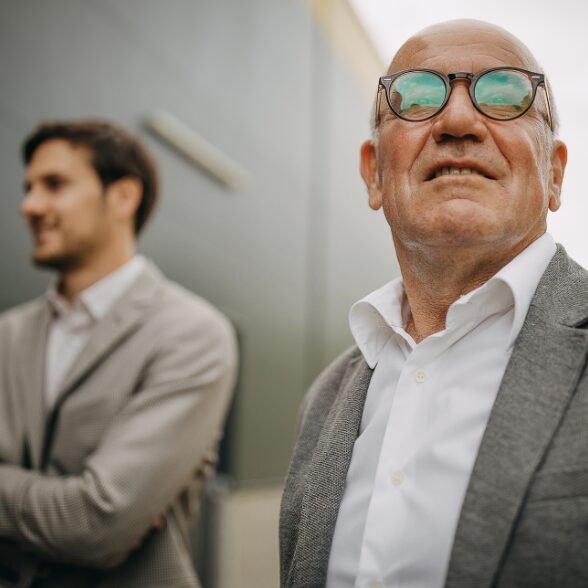Contents
Key Takeaways
- Change management is a systematic approach that helps transition individuals, teams, and entire organisations from their current state to a desired future one.
- Organisational change is linked to the organisation’s overarching strategies, making alignment crucial for successful transitions.
Even though we recognise change management as a determining factor in the success or failure of organisational transformations, a surprising 70% of change initiatives reportedly fail (WTW, 2023). This is why we need to understand and approach change management the right way.
What Is Change Management?
Change management is the structured approach organisations employ to navigate the transition from their current state to a desired future state. It involves the processes, tools, and strategies to manage the people side of change to achieve the required business outcomes.
The essence of change management lies in its ability to reduce resistance, foster understanding, and ensure that the change is sustainable in the long run.

Why Is Change Management Important?
Change management helps organisations to aptly respond to internal or external factors, such as technological advancements, market shifts, or internal restructuring. These transitions can be haphazard without structured change management processes, resulting in confusion, resistance, and inefficiencies.
Effective change management ensures that changes are introduced in a systematic and coordinated manner, minimising disruptions and ensuring that everyone affected understands their roles and responsibilities.
While resistance to change is a natural human instinct, it’s possible to turn this resistance into acceptance and even advocacy with the right approach. Proper change management not only eases the transition for employees but also instils confidence in leadership, as stakeholders recognise that the organisation is capable of evolving without chaos.
The “Emotional” Side of Change Management
While change is inevitable in our personal and professional lives, there’s an interesting distinction in how we perceive and process these changes.
When faced with personal shifts, such as moving house or experiencing a significant life event, we naturally expect a roller-coaster of emotions. However, when it comes to professional changes, there’s a prevailing notion that emotions should take a backseat, and we must approach change with rationality.
This perspective, unfortunately, doesn’t account for the intricate relationship between emotion and reason, especially in the context of change management.
Successful change within an organisation isn’t just about ushering in new strategies or tools; it’s about comprehending and catering to the emotional responses of those involved. People’s feelings, fears, and hopes during times of change can significantly influence the outcome of any new initiative.
Emotion isn’t the antithesis of rationality in change management; it’s a complementary aspect. In fact, the human side of change is reported to be taking centre stage in change management industry for the next five years*.
This is where the importance of emotional intelligence in the workplace becomes evident. Leaders with high emotional intelligence can discern, understand, and address the emotional currents within their teams. By doing so, they not only ensure smoother transitions but also foster a more empathetic and resilient company culture.

Key Principles of Change Management
Vision, Direction, and Leadership Alignment
At the heart of any successful change initiative lies a clear and articulate vision that sets out the desired future state. This vision, coupled with a strategic direction, sets the course for the entire change journey.
However, only the formulation of a vision is not enough. And this is where leadership alignment enters. Leaders not only rally the troops, but they also embody the change, acting as role models and proponents of the new way. Leaders’ commitment ensures that the change process remains consistent with the organisation’s overarching objectives and aspirations.
When leaders are in sync, it creates a unified front that enables the organisation to navigate change more effectively and cohesively.
Also read: Vision: The ‘Why’ Behind Change
Stakeholder Engagement and Communication
Successful change isn’t a solo endeavour; it’s a collaborative effort. Engaging with stakeholders—those affected by or can affect the change—ensures the process is inclusive and holistic.
This engagement is certainly not a one-time event. It’s a continuous conversation, balancing the act of conveying important updates with the equally significant task of listening. Understanding stakeholders’ apprehensions, feedback, and insights can illuminate potential roadblocks and opportunities.
Through open and transparent communication, organisations can foster trust and build a community that is invested in the success of the change.
Training, Support, and Feedback Mechanisms
Change often necessitates learning new skills or adapting existing ones. As such, offering robust training and support is imperative to equip the workforce for the evolving landscape. But the journey doesn’t end once training is delivered.
Implementing feedback mechanisms plays a dual role as it gauges the efficacy of the support provided and captures the evolving needs of the workforce.
By iterating based on this feedback, organisations can ensure that their training remains pertinent, which in turn enhances the chances of change adoption.
Addressing Resistance and Celebrating Milestones
Change can be daunting and may lead some individuals to resist or push back.
Addressing change resistance head-on is vital, but doing so through a lens of positivity can be even more impactful. Celebrating milestones, big or small, creates moments of positivity and motivation. These celebrations act as tangible markers of progress, showcasing the benefits of the change.
When individuals witness the fruits of their efforts, it can lessen their resistance, fostering a more receptive and adaptable environment.

Holistic Perspective with Flexibility
Change does not occur in isolation; it’s interconnected with the broader aspect of an organisation’s dynamics.
Adopting a holistic viewpoint ensures one can see the intersections and interdependencies of different change initiatives. With this panoramic view, change leaders can ensure cohesive and synergistic strategies.
However, a rigid approach can be counterproductive. Flexibility and agility then allow change professionals to adapt to shifting circumstances, ensuring that the strategies employed remain relevant and effective in the ever-evolving organisational context.
Sustainability, Reinforcement, and Metrics
Initiating change is one thing; making it stick is another. To ensure longevity, change initiatives need constant reinforcement and sustainability checks.
Leveraging data and metrics offers a scientific and objective means to track the trajectory of the change. Through consistent monitoring, organisations can identify areas of improvement, make necessary course corrections, and reaffirm the value of the change.
Over time, these metrics not only validate the change but also foster a culture of continuous improvement and adaptability.
Steps in the Change Management Process
Change management isn’t a one-size-fits-all approach. It’s a journey, and like any journey, it has its steps.
John Kotter’s 8-step change model is one of the most prominent change management models in modern business. As we give the rundown of each step, let’s consider a hypothetical scenario where a traditional publishing company, “Book Haven,” needs to adapt to the digital age by integrating e-books and online sales into its business model.
Step 1: Establish a Sense of Urgency
Before a change can begin, there needs to be a shared sense of urgency around the need for change. This requires a critical examination of market conditions, competitive threats, and any potential crises. Highlighting major opportunities can also serve as a motivator.
The CEO presents data during a company-wide meeting: sales have declined by 30% over the past 5 years, while e-book sales industry-wide have surged by 200%. Additionally, several of Book Haven’s competitors are already gaining significant online market share.
Step 2: Form a Powerful Guiding Coalition
Again, change cannot happen in isolation. Forming a coalition of influential people, who are invested in the success of the change, can be powerful. This team should not only have influence but also be well-led and truly collaborative.
The CEO forms a Digital Transformation Team composed of leaders from the editorial, sales, IT, and marketing departments, as well as a few external digital strategy consultants.

Step 3: Create Change Vision
A clear, concise, and compelling vision can help everyone understand the direction of the change. This isn’t just a mission statement but an actionable vision with strategies that give direction to the change effort.
The Digital Transformation Team creates a vision: “In two years, Book Haven will offer a seamless blend of print and digital products, with 40% of our sales coming from e-books and online channels.”
Step 4: Communicate the Vision
Once the vision has been developed, it’s imperative to communicate it widely and frequently. Every channel—meetings, newsletters, informal conversations—should be used to continuously communicate the vision. It’s also crucial that the guiding coalition embodies the vision and acts as role models.
The vision is communicated via town hall meetings, email newsletters, and departmental presentations. The Digital Transformation Team sets up regular Q&A sessions and workshops to address concerns and gather feedback.
Step 5: Empower Others to Act on the Vision
For change to actually happen, barriers need to be removed. This means restructuring organisational processes, reassigning responsibilities, or providing training. Employees should feel empowered to contribute to the change, and risk-taking should be encouraged if it aligns with the vision.
The company provides training sessions on digital technologies for employees. The IT department is given a budget to upgrade infrastructure and systems. Employees are encouraged to propose innovative ideas for the digital transition.
Step 6: Plan for and Create Short-Term Wins
Long-term change can be daunting. To keep the organisation motivated, it’s important to set achievable short-term goals. Celebrating these “quick wins” can boost morale and demonstrate the feasibility of the change.
Within six months, Book Haven successfully launches its first set of e-books. They celebrate by giving employees access to free e-book versions of their published titles. The marketing team runs a successful online campaign, which results in a 15% increase in online sales.
Step 7: Consolidate Improvements and Produce More Change
Rather than declaring victory too early, it’s essential to consolidate the gains achieved and keep pushing for more change. This may involve adjusting strategies, introducing more processes, or bringing more people who can drive the change into the transformation process.
With the success of the initial e-book launch, the company decides to expand its digital catalogue. They partner with audiobook platforms and also introduce a subscription model for avid readers. They hire more digital-savvy staff to bolster their online efforts.
Step 8: Institutionalise the New Approach
Last but not least, for any change to be sustainable, it needs to become a core part of the organisational culture. This involves connecting new behaviours to success in the organisation and ensuring that leadership development and succession plans are aligned with the new approach.
As digital sales grow, Book Haven starts to incorporate digital strategy into its core operations. New employee onboarding now includes training on e-book technologies and online sales strategies. The company’s success stories, driven by the new approach, are regularly highlighted, reinforcing the value of the digital pivot.

Change Management VS Change Leadership
When discussing change management, the topic of change leadership frequently arises. While the terms “change management” and “change leadership” are often used interchangeably, they possess distinct connotations and applications.
Change management, as explored above, refers to the structured processes and tools used to transition individuals and teams from a current state to a desired one. Its focus is largely on controlling and directing change to minimise disruptions.
On the other hand, change leadership delves deeper, concerning itself with driving forces of change, setting directions, and influencing and inspiring individuals to embrace and champion change. If change management is about the tools and processes, change leadership is about the vision, passion, and strategies to realise it. A good change leader doesn’t merely manage the transition but thrives amid uncertainty, channelling the energy of change towards a brighter, innovative future.

In essence, while change management ensures a smooth transition, change leadership aspires for transformational success. Both are indispensable in the modern organisational landscape, complementing each other to ensure not only the successful implementation of change but also its visionary direction and sustainable embedding within the culture.
Also read: Navigating Organisational Transformation: Change Leadership vs Change Management
Mastering Change Management
Change management is not just about introducing changes; it’s about ensuring that these changes are embraced and integrated seamlessly. With the right approach, tools, and mindset, organisational change can be less daunting and more of an opportunity for growth.
ChangingPoint facilitates targeted 1:1 and group behavioural change programmes to support personal, team, and organisational development. Talk to us about your change initiatives today.

Written by Jayne Ruff
Jayne Ruff, Occupational Psychologist & Managing Director at ChangingPoint. To find out more about how ChangingPoint can help you align minds to transform your business, get in touch.
From the blog

Blog How Leaders Can Create Psychological Safety at Work
While many discussions about safety in the workplace are rightfully centred around physical health and safety, they should be expanded to cover psychological safety at work too.
Read more
Blog Strife or Thrive? 7 Most Common Challenges in Family Businesses
Take a closer look at how tradition, innovation, and change intersect within a family business context.
Read more
Blog The Glass Cliff: A Perilous Path for Women in Leadership
Learn what the glass cliff is, how it affects women’s leadership positions, and what we can do together to create more inclusive workspaces.
Read more






